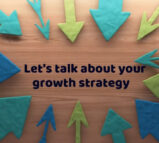By Ravin J. Jesuthasan and Marie S. Holstrom
As work itself is changing, some of the basic tenets of leadership development are being challenged. The very idea of leading people in jobs is changing with the democratization of work and the continued advance of digital technology. These twin forces are moving work beyond the traditional structure of activities that are organized into stable jobs within a siloed organization. Work is being disaggregated into tasks that can be dispersed inside and outside of the organization — the “uberization” of work.
And as AI and robotics increasingly supplement and replace the work of humans, the expectations of leaders — truly understanding the work, how it can be executed now and in the future, and the cost, capability and risk implications of current and future work options — are increasing exponentially.
Consider how IBM has tackled new ways of work distribution as described in Lead The Work: Navigating a World Beyond Employment, a book which one of us, Ravin, co-authored. IBM has been building a talent system that both aligns with and accelerates this phenomenon of the external disaggregation of work. Here’s how the book describes it:
IBM’s approaches to work range from extreme deconstruction and dispersion of the job assignment (where IBMers can choose to work on short-term projects) to those that retain tasks in a job but create permeable internal and external boundaries, such as exchanging employees with clients or partners for short term assignments … The company sees tangible business and client results and enhanced development opportunities for employees.
To meet these challenges, we see three priorities for developing the next generation of leaders in the “work-disrupted” age:
Mastery of Digital
Digital technology is increasing the complexity and options associated with this plurality of work. We are increasingly seeing organizations trying to infuse a greater focus and understanding of “digital” among their leaders. And while that is a good starting point in helping leaders make new connections, see different patterns and identify opportunities and threats, it does not go nearly far enough in helping organizations develop the leadership muscle required to lead in the new world of work.
“Digital” is not something that is happening to organizations, it has and continues to be the means through which work is accomplished. Similar to the advance of “standardized process”in the early 20th century, digital is not just the new product to offer our customers (e.g., the one-click mobile purchasing app), it is the means through which we get work done (e.g., robotics for package loading on and off the truck, the disaggregation of an accounting job, the transition to free agents on a talent platform), the mechanism through which we engage with all our stakeholders (e.g., employees, customers, free agents, communities we operate in) and so much more.
Mastering digital requires leaders to be agile amid disruption. To effectively lead, knowledge of technology certainly matters but there’s much more to leaders mastering and optimizing digital for their organizations. Leaders must have the vision and forward-focus to anticipate how technology could disrupt the business model and the skill to mobilize the organization for change and drive a culture of collaboration.
Similar to what we’ve learned about creating cultures of innovation, it takes more than a handful of leaders contributing creative brilliance; it takes leaders driving the focus on and readiness for change that going digital requires. Thus, organizations would do well to help leaders go digital through learning content centered around envisioning the future, taking risks, leading change, driving collaboration and leveraging the abundance of data generated by going digital.
In addition to leadership development programs being used to help leaders “go digital,” these programs need to reflect the new realities of the digital and democratized workplace. Development programs must evolve from a static, closed-system approach. Instead, these programs must keep pace by delivering engaging, “open source” content and experiential learning opportunities that are rich with high-fidelity simulations and real-life technology applications.
It is important to recognize that developing a digital focus among leaders requires a multi-pronged approach from seeding the organization with those who are “born digital’ while also weaving digital learning content across the leadership development curriculum to help other leaders “go digital.” Focusing this type of mindset shift and behavior change must move beyond a core group of leaders and instead elevate the full leadership cadre around the prominence of digital and its relevance and meaning for how leaders lead.
Beyond-the-Classroom Experiences
Relying solely on classroom-based learning has a reputation for being inspiring in the moment but offering little to no transfer of training — nothing changes back on the job. But relying solely on on-the-job learning poses its own obstacles including lack of good feedback and limited opportunities to learn new things. The power comes from bringing formal learning and on-the-job learning together in a deliberate manner. Use formal learning to set the context and content for change in a standard and thorough way. Then practice and apply new behavior back on the job while instituting routines for manager, peer and coach feedback.
Consider the case of Peter Voser, former CEO of Royal Dutch Shell. As described in Lead The Work, he had an expansive career with Shell that spanned 25 years but unlike many top leaders in the company, he had a break in service at the top of his career. Voser took a detour to be CFO for ABB from 2002 to 2004 and then returned to Shell to become CEO in 2009. Voser was impatient for a new experience which attracted him to ABB and there he learned a whole new level of turnaround leadership. In his own words, “it was a truly formative experience.”
Let’s go back to the IBM example. IBM runs an internal talent platform, the Open Talent Marketplace (OTM) that matches talent needs to talent supply at the skill, assignment and job level. OTM assignments are sourced and short-term talent matches made to accelerate the completion work across the organizations, un-bounded by geography or business line or industry segment. This OTM approach is furthered through external talent exchanges with clients and partners.
This same approach is used for developing leaders. The use of assignment management, talent brokering, and experience mapping are recent examples of internal leadership development practices to make better talent-to-role matching that solves both sides of the equation — organizational need and individual development.
Boundaryless or open-systems learning is the next step in this migration. Consider, for example, open enrollment at the John F. Welch Leadership Center at Crotonville where leaders from other organizations (e.g., market partners to GE) can take advantage of the unique GE learning experience.
Expert Coaching
Coaching is another element of the leadership development agenda that has evolved. Historically having a coach was seen as a negative, an intermediary getting involved to fix a problem. Now many leaders seek out not just mentors but dedicated coaches — and many are reporting that they have more than one external coach who has followed them from company to company, providing perspective and a “safe” place for dialogue.
What’s next on the horizon for coaching as a leadership development practice? Performance or Life coaches with real technical expertise. Performance coaches are internal resources that are not in the leader’s hierarchy but have insight into the organization and see the leader in action. Life coaches are typically external to the organization and are called upon as a trusted confidant and advisor when needed. Both are there to hash through ambiguity, discuss concerns, test assumptions and be reminded of his or her own development pathway.
Consider Marshall Goldsmith’s new 15 Coaches Project. As the #1 executive coach in the world, Marshall Goldsmith has decided to pay it forward and offer a lifetime of learning for free to 15 of what are sure to be thousands of applicants. Through a series of premier learning sessions with Marshall and a collection of renowned global leaders, the 15 participants will learn what it takes to excel in executive coaching. With this selfless act, a new cadre of expert coaches will be available to leaders around the world.
Today and tomorrow’s leaders require an agility to thrive in times of turbulence and disruption, a mastery of all things digital, and the ability to lead without formal power in a growing non-employment labor market. Leaders must learn how to reward people in the “currency” they covet; attracting, engaging and retaining talent across the entire spectrum of work relationships and recognizing the different ways of leading. Upskilling leaders to navigate through this new world of work requires a reboot on how leaders gain and use their experiences.







